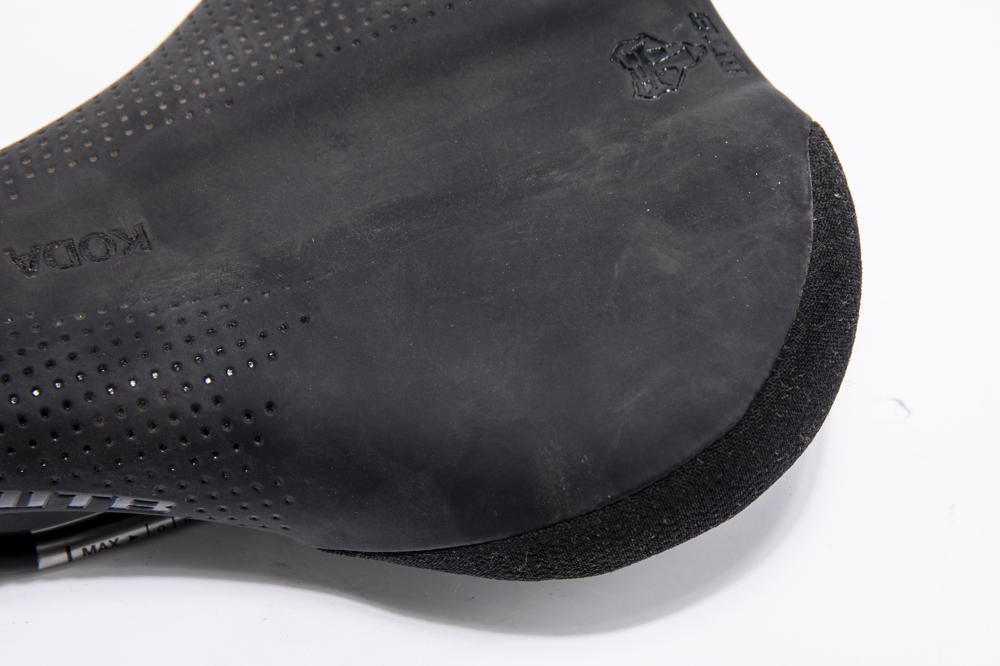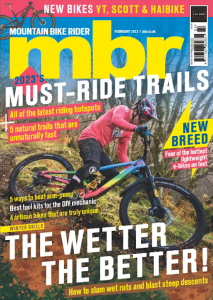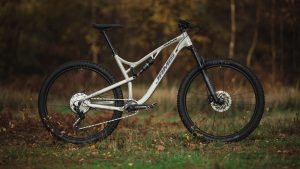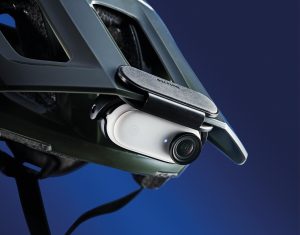We've ridden the backside out of our shorts to draw up this list of the very best mountain bike saddles available for all types of trail riders.
These days, the very best mountain bike saddles have to be all things to all riders too, because each have specific requirements when it comes to shape and fit, but ultimately we’re looking for the same thing – an armchair ride with a bar stool build.
If men’s/unisex saddles aren’t working for you or you’re looking for a female-specific saddle, then head over to our best women’s mountain bike saddles buyer’s guide.

SDG Bel Air 3.0 saddle
SDG Bel Air 3.0 saddle
A saddle fit for a fresh prince
Weight: 238g | Length: 255mm | Width: 142mm | Rating: 10/10
Pros: Best shape. Best support.
Cons: Nothing really.
The saddle feels solid when seated climbing, yet with the rails being suspended slightly on the base, there’s plenty of flex for taking the sting out of those bigger impacts on the rough, pedally sections. There are no exposed seams, no glue or staples showing or rough edges – this saddle just looks incredibly sleek and polished.
On the back is a sonic-welded rear bumper, which stops wear and doesn’t collect mud like a Kevlar strip. We thought cutting away material would make the Bel Air 3.0 feel flimsy, but it’s still a substantial seat. There’s loads of comfort and support in this saddle. Where the Bel Air 3.0 real shines though, is in the sleek construction and the fact that it’s dead easy to keep clean. The SDG Bel Air 3.0 is a definite step up, and easily deserves top marks.
Read our full test review of the SGD Bel Air 3.0

Fabric Scoop Elite saddle
Fabric Scoop Elite saddle
Beautiful convergence between form and function
Weight: 229g | Length: 278mm | Width: 142mm | Rating: 9/10
Pros: Comfy padding and flexible base. Fits a broad range of riders.
Cons: Can be a bit slippery when wet.
Fabric’s sleek, beautifully packaged Scoop is something of a benchmark perch. The smooth, minimal finish is the result of a three-part bonding process that melds the waterproof cover to a coloured base, uninterrupted by any stitching or staples, which makes it a cinch to keep clean.
For £40, the Elite, cro-mo-railed model comes in a trio of profiles, with progressively deeper curves, suitable for everything from XC to downhill. The three shapes are a matter of taste. Leant-forward for endurance or XC riding, the flattest (and lightest) shape matches a more rotated hip and pelvis, while the curvier Radius is more trail riding-friendly, with extra padding and deeper-dished geometry.
Over rough ground, all three shapes share an extremely cushioned feel, and feature a flexible chassis that has a lot of inherent give, without being too twangy when pedalling hard.
Read our full test review of the Fabric Scoop Elite saddle

WTB Volt Race
WTB Volt Race
Great value plush perch
Weight: 316g | Length: 245mm | Widths: 135mm, 142mm, 150mm | Rating: 9/10
Pros: Great for all-day riding. Plenty of width options.
Cons: On the heavier side.
The version of the WTB Volt has medium weight cro-mo steel rails, a hardwearing microfibre cover, comfy flex-tuned shell and regular padding with a gel insert.
We say regular, as it’s actually pretty thick and makes the Volt the most comfortable when grinding forward on a hard climb. When you kick back there’s a lot of cushioning there too, and we never had to work hard to hit the sweet spot, it just feels inherently comfortable.
Finish quality underneath is excellent. Everything is neat and tidy and all the glued edges are covered with a plastic bumper. The rail length is about 20mm but they do have gradients along to make repeat positioning easier. With its high tail and slightly shallow shoulders it definitely scores highly in the comfort stakes.
Read our full test review of WTB Volt Race

Ergon SM Enduro Comp
Ergon SM Enduro Comp
Excellent pressure relief properties
Weight: 232g | Length: 245mm | Widths: 135mm, 148mm | Rating: 9/10
Pros: Great choice for long rides. Raised tail aids climbing stability.
Cons: Finish is a bit rough underneath
The first thing you’ll notice is the pressure-relieving cutaway down the centre. Underneath the cover, either side of this channel, are inlays made from a special type of foam that’s very supportive.
The SM Enduro Comp is a lot flatter and there’s more to sit on, again improving the support. This saddle doesn’t have deep shoulders, which you normally push against when climbing but Ergon gets round this by kicking the saddle up at the tail – this keeps your sit bones in the right place.
The saddle is comfortable and feels that way even after three to four hours of hard shredding. There’s more padding under the sit bones and it has a better overall profile.
Read our full test review of the Ergon SM

Reinforced corners keep the upper from damage and rips
How we tested the best mountain bike saddles
Our testing involved fitting each saddle to the same bike, using the same tyre pressures and suspension settings and short liners. Obviously, there are a myriad of features to take note of, but the overriding factor with regards saddle performance is comfort. It is somewhat subjective, and can also vary if you tweak the angle or position of the saddle but generally the most comfortable saddles have scored the highest.
Saddle manufacturers make a ton of saddles for all sorts of riders, so what you’re seeing here is just a small percentage of what’s available. Our focus is on trail riding, but we’ve tested gravity-focused seats because they have some interesting features and also the manufacturers say you can use them for trail riding, so we wanted to put that to the test.
What to look out for in best mountain bike saddles:
Before the widespread adoption of the dropper post, the saddle was a relatively static component, but these days your saddle moves up and down numerous times every ride and, depending on whether you’re rolling along the flat, cruising up a gradual climb, or tackling a steep ascent your weight can be positioned over different parts of it. This means gauging comfort is a little bit harder, especially since we don’t all have the same width sit bones or, obviously, anatomy.
The saddle is also used to control the bike, especially when it’s dropped down and you’re descending. Introduce electric mountain bikes into the mix, which encourage you to sit down and pedal more of the time, and you have a component that subtly switches roles multiple times during a ride.
Cover
This is often a synthetic leather, which is hardwearing, breathable and long lasting. To add greater abrasion resistance and grip, Kevlar sections are often used at high-wear areas such as the corners and rear of the saddle.
Padding
Underneath the cover is a layer of EVA foam. It’s lightweight and has good shock absorption properties. On some saddles you also get a supplementary gel or elastomer pad under the forward areas. This reduces stress on delicate parts and improves overall comfort.

Correct width can be more important than padding
Width
Most manufacturers now produce saddles in different widths to match a narrower range of sit bones. However, this is not the only thing that affects comfort – the overall shape, length and even the angle you’re sitting at, all play a part. Getting the correct width is a good starting point, but don’t be afraid to try a narrower or wider saddle (you may have to switch brands) if the one you have isn’t particularly comfortable.
Height
Saddles have different heights between the rails and the seat, and low-profile saddles let you run longer dropper posts. Some low-profile saddles are also cut away at the tail to provide extra tyre clearance when the saddle is dropped – useful for long travel 29ers with slack seat angles.

Saddles come in all kinds of wild designs
Base
This is made from an injection moulded plastic. To add comfort and alleviate pressure some manufacturers cut holes or channels into the base. Offsetting the rails on the base, or mounting them on small elastomer bumpers, also introduces greater flexibility and comfort.

Rail material choice affects overall weight
Rails
The cheapest saddles have solid steel rails and they obviously weigh the most, but you can save weight with hollow steel, titanium or composite rails. Be aware that manufacturers do mix other elements into the steel and give it a flashy name, but essentially, it’s the same stuff. Regardless of material, most saddles have 7mm rails and will fit most seatposts on the market, it’s one of the few industry standards that hasn’t been mucked about with.


















